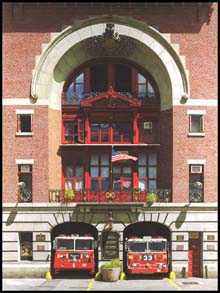When Chris Steins approached me with his idea to write a kids book about urban planning, I was a little skeptical. We had gotten a hold of a book from 1952 called Neighbor flap foot. The City Planning Frog, by Bill Ewald, Jr. and Merle Henrickson, and to be generous, it wasn’t fit for a modern audience. Here’s a sample: “Did you know that there is a special rule from City Hall to make sure each house has plenty of light and air, Mickey?” the wise frog asked. “No, I haven’t heard about that.” “Well, there is. Blue Nose told me about it,” answered Flap Foot, hopping about to limber up his stiffened legs. “It’s is called zoning. It is a good rule, like brushing your teeth, only this rule is for people who build buildings.”
When Chris Steins approached me with his idea to write a kids book about urban planning, I was a little skeptical. We had gotten a hold of a book from 1952 called Neighbor flap foot. The City Planning Frog, by Bill Ewald, Jr. and Merle Henrickson, and to be generous, it wasn't fit for a modern audience. Here's a sample:
"Did you know that there is a special rule from City Hall to make sure each house has plenty of light and air, Mickey?" the wise frog asked.
"No, I haven't heard about that."
"Well, there is. Blue Nose told me about it," answered Flap Foot, hopping about to limber up his stiffened legs. "It's is called zoning. It is a good rule, like brushing your teeth, only this rule is for people who build buildings."
You can't blame authors Bill and Merle for trying. How do you explain a field that is an umbrella for so many different activities and practices to kids under 10? Chris's reasons for wanting to do the project are actually wrapped up in that question. Most of us had no idea there even was such a field until we reached adulthood. I had never heard of urban planning until I was in my 30s, and many people I know weren't conscious of it until at least their undergrad. So if we can reach kids with some awareness of how planning works at a young age, maybe we can change that. Maybe we can raise a world full of people who are at the least aware of the importance of planning, and perhaps even shape some planners, developers, and urban designers of the future.
 Creating the book was a great deal of fun, and some serious work as well. After settling on the urban transect as a way to get kids thinking about "who decides what goes where," we created a virtual image library of the different transect zones, selecting mailboxes, building styles, even cows that we thought were good visual representation (the fire station at the right appears in the T6 zone). We used three different cities that we know (New York, San Francisco, and Los Angeles) as models for neighborhood scales (SF: T6 is Downtown, T5 is South of Market, T4 is Noe Valley, etc.). We then worked with the illustrator (David Ryan, also a comic book author) to get everything just right. I'm certain this is the first time Dave ever had to deal with authors citing problems in his pictures with ‘eyes on the street' and relative street widths!
Creating the book was a great deal of fun, and some serious work as well. After settling on the urban transect as a way to get kids thinking about "who decides what goes where," we created a virtual image library of the different transect zones, selecting mailboxes, building styles, even cows that we thought were good visual representation (the fire station at the right appears in the T6 zone). We used three different cities that we know (New York, San Francisco, and Los Angeles) as models for neighborhood scales (SF: T6 is Downtown, T5 is South of Market, T4 is Noe Valley, etc.). We then worked with the illustrator (David Ryan, also a comic book author) to get everything just right. I'm certain this is the first time Dave ever had to deal with authors citing problems in his pictures with ‘eyes on the street' and relative street widths!
Perhaps our greatest challenge was making the writing fun and engaging. After a draft with straight prose, we realized that to make it sing we really needed to make it rhyme, Dr. Seuss-style. Problem number one is, what rhymes with ‘planner'?! Manner is the only word out there, and that led to some clunky drafts. You'll have to read the book yourself to see how we solved the problem
In the end, it was a lot of fun and a great privilege to write and put together. I hope that it works like a pill in peanut butter- a delicious delivery system for some useful medicine.

Planetizen Federal Action Tracker
A weekly monitor of how Trump’s orders and actions are impacting planners and planning in America.

Chicago’s Ghost Rails
Just beneath the surface of the modern city lie the remnants of its expansive early 20th-century streetcar system.

Amtrak Cutting Jobs, Funding to High-Speed Rail
The agency plans to cut 10 percent of its workforce and has confirmed it will not fund new high-speed rail projects.

Ohio Forces Data Centers to Prepay for Power
Utilities are calling on states to hold data center operators responsible for new energy demands to prevent leaving consumers on the hook for their bills.

MARTA CEO Steps Down Amid Citizenship Concerns
MARTA’s board announced Thursday that its chief, who is from Canada, is resigning due to questions about his immigration status.

Silicon Valley ‘Bike Superhighway’ Awarded $14M State Grant
A Caltrans grant brings the 10-mile Central Bikeway project connecting Santa Clara and East San Jose closer to fruition.
Urban Design for Planners 1: Software Tools
This six-course series explores essential urban design concepts using open source software and equips planners with the tools they need to participate fully in the urban design process.
Planning for Universal Design
Learn the tools for implementing Universal Design in planning regulations.
Caltrans
City of Fort Worth
Mpact (founded as Rail~Volution)
City of Camden Redevelopment Agency
City of Astoria
City of Portland
City of Laramie






























